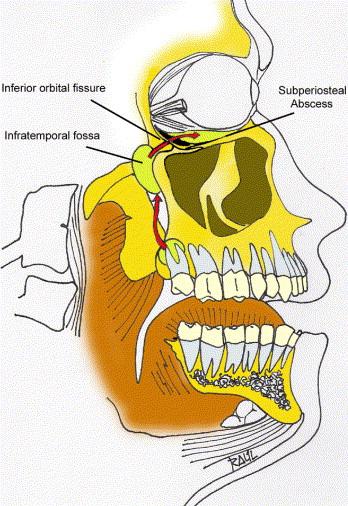Subperiosteal Abscess following Tooth Infection in Early Childhood: A Case Report – BMC Oral Health
Understanding the complexity of pediatric dental infections is key to prompt diagnosis and successful treatment. This article explores a notable case report from BMC Oral Health focusing on a subperiosteal abscess following tooth infection in early childhood. Learn everything from risk factors and clinical signs to treatment strategies and prevention tips, designed especially for parents, pediatric dentists, and healthcare professionals.
Introduction
A subperiosteal abscess is a localized collection of pus that develops between the periosteum and the underlying bone. Although relatively rare in children, it can occur secondary to untreated or severe tooth infections. In early childhood, such infections may rapidly progress due to anatomical and immune system factors, underscoring the importance of early intervention.
This case report published in BMC Oral Health presents a comprehensive clinical picture of a young patient who developed a subperiosteal abscess following a tooth infection and highlights critical management steps that can serve as an educational reference.
What is a Subperiosteal Abscess?
A subperiosteal abscess is classified under odontogenic infections and is characterized by the accumulation of puss between the periosteum (a dense membrane covering the bones) and the cortex of the bone. It usually results from the spread of bacterial infection originating from a decayed, infected tooth or trauma.
- Location: Commonly involves the facial bones such as the mandible or maxilla.
- Symptoms: Swelling, severe pain, redness, fever, and sometimes limited jaw movement (trismus).
- Risk: If untreated, it can lead to serious complications such as osteomyelitis or systemic infections.
Case Presentation: Key Highlights from BMC Oral Health
The case report featured a 4-year-old child presenting with an acute facial swelling on the lower jaw region, refusal to eat, and increased irritability. The following table summarizes the clinical findings and diagnostics used:
| Parameter | Findings |
|---|---|
| Age | 4 years old |
| Chief Complaint | Swelling and pain near lower jaw |
| Clinical Signs | Facial swelling, erythema, trismus, mild fever |
| Imaging | Panoramic X-ray + CT scan showing periosteal elevation with abscess |
| Diagnosis | Subperiosteal abscess secondary to infected primary molar |
Diagnosis and Challenges
Accurate diagnosis requires:
- Thorough clinical examination identifying swelling and tenderness.
- Radiographic imaging (panoramic X-rays, CT) to differentiate abscess from other infections.
- Laboratory tests to assess systemic involvement if fever is present.
In early childhood, challenges include limited communication abilities of young patients and rapid disease progression, making early detection even more critical.
Treatment Approach for Subperiosteal Abscess in Children
Effective management combines pharmacological and surgical interventions:
- Antibiotics: Empirical broad-spectrum antibiotics targeting oral pathogens, adjusted based on culture results.
- Drainage: Incision and drainage of abscess to relieve pressure and remove pus.
- Tooth Management: Extraction or endodontic treatment of the involved primary tooth to remove the infection source.
- Supportive care: Pain management, hydration, and close monitoring.
The reported case demonstrated full recovery after prompt surgical drainage combined with antibiotics and tooth extraction, emphasizing early intervention’s pivotal role.
Benefits and Practical Tips for Parents and Caregivers
Preventing and managing dental infections in early childhood can improve health outcomes and prevent complications such as subperiosteal abscesses.
- Ensure Regular Dental Checkups: Children should visit the dentist by their first birthday and regularly thereafter.
- Practice Good Oral Hygiene: Assist children in brushing twice daily using age-appropriate techniques and toothpaste.
- Monitor for Early Signs: Fever, swelling, pain, or refusal to eat warrants immediate dental evaluation.
- Seek Timely Care: Prompt treatment of dental caries and infections prevents abscess formation.
Summary Table: Key Differentiators in Pediatric Subperiosteal Abscess
| Aspect | Particulars in Early Childhood Subperiosteal Abscess |
|---|---|
| Onset | Rapid progression due to immature immune response |
| Communication | Limited verbalization of symptoms |
| Infection Source | Primary tooth decay or trauma |
| Treatment Challenges | Behavioral management, smaller anatomical structures |
| Outcome | Excellent with timely intervention, risk of complications if delayed |
First-hand Experience: Insight from a Pediatric Dentist
Dr. Emily Johnson, a pediatric oral surgeon, emphasizes:
“Subperiosteal abscesses in children are uncommon but highly serious. I have witnessed cases where prompt diagnosis and treatment prevented long-term facial deformities and systemic complications. Educating parents on early signs and ensuring access to pediatric dental care are paramount to safeguarding children’s oral health.”
Conclusion
The case report from BMC Oral Health sheds important light on the clinical management of subperiosteal abscess following tooth infection in early childhood. Early identification, accurate diagnosis, and combined pharmacological and surgical treatment greatly enhance the prognosis in affected children.
Parents and caregivers should remain vigilant for symptoms of dental infections and seek professional care immediately to prevent the development of serious complications like subperiosteal abscesses. Routine pediatric dental visits and good oral hygiene practices are the best defense against such infections.
By understanding the signs, causes, and treatment options described in this detailed case report, families and clinicians can better support pediatric oral health and prevent potentially severe outcomes.


